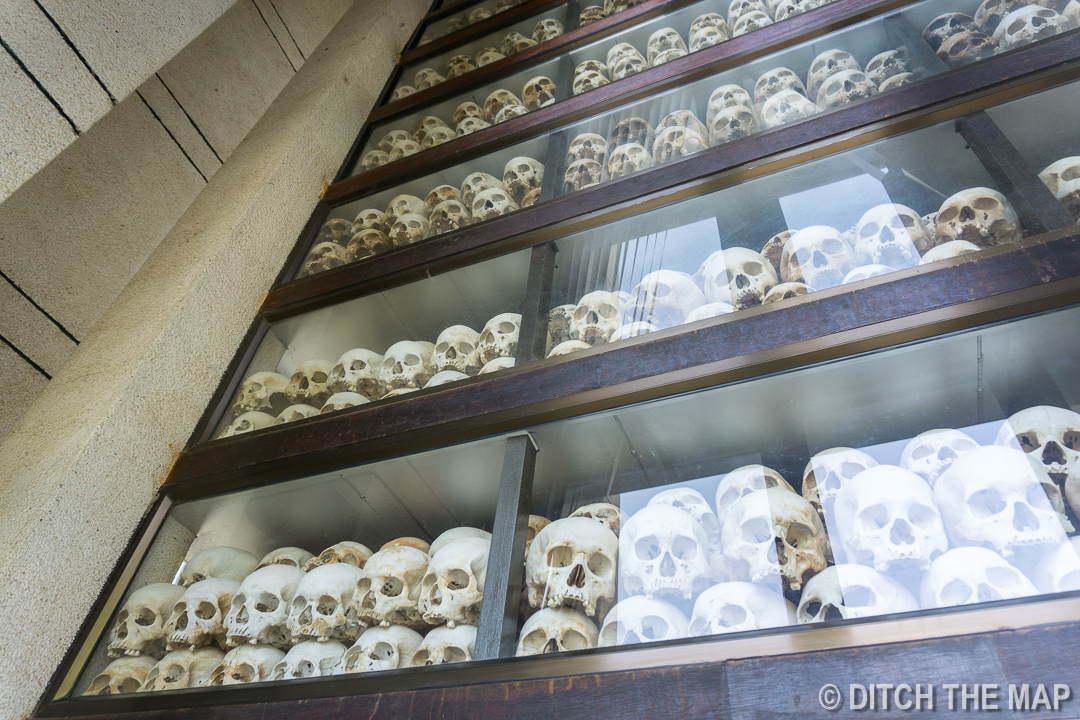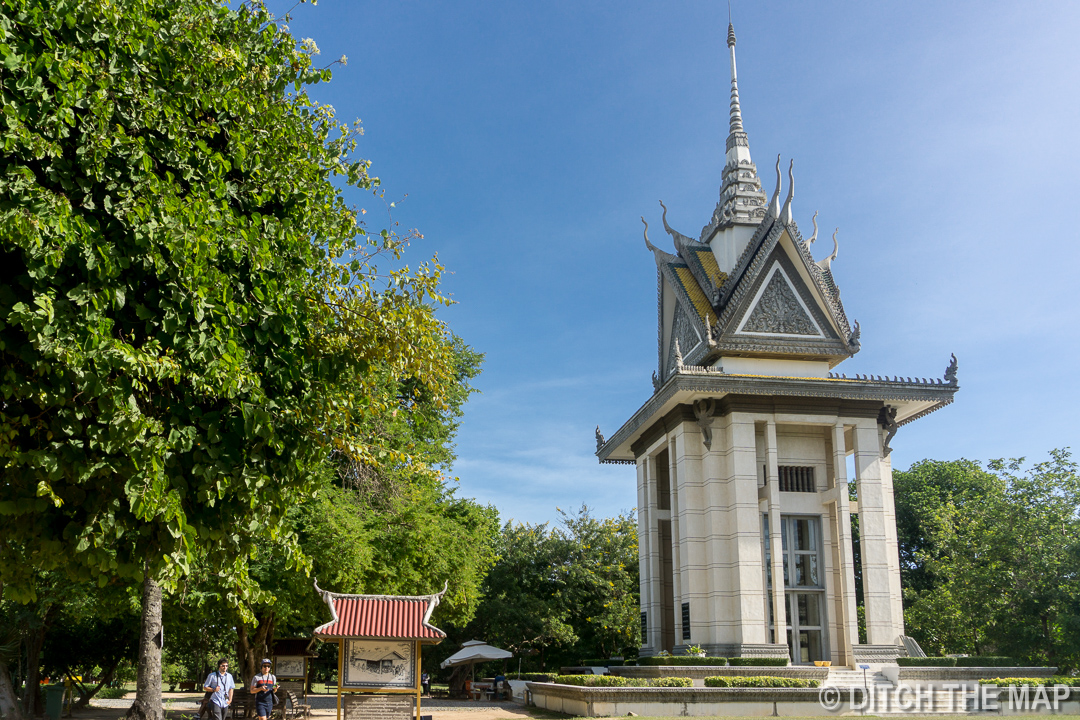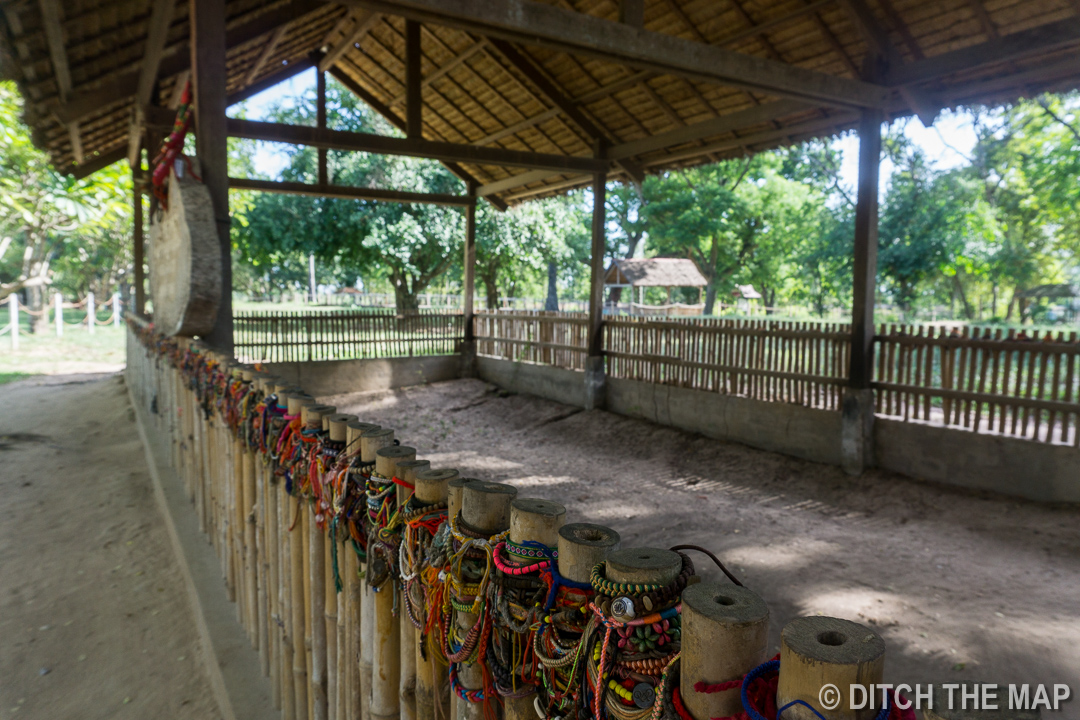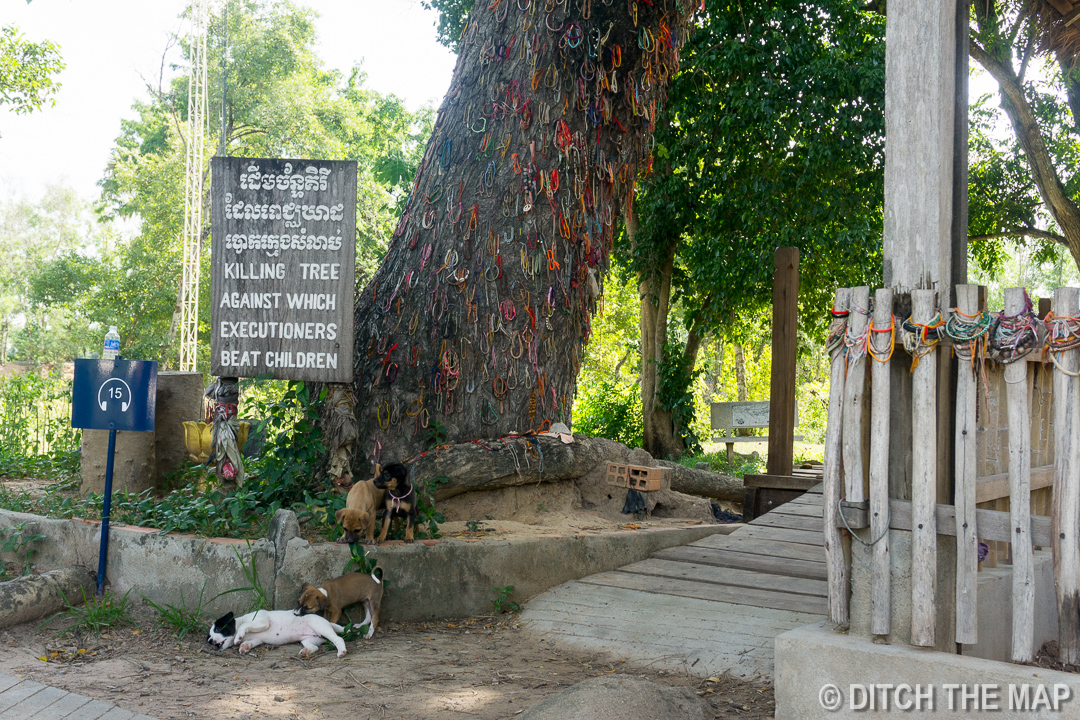4 Days in Phnom Penh, Cambodia
/September 2-5, 2016
Arriving in Phnom Penh
View from our Hotel in Phnom Penh, Cambodia
From Mondulkiri it was a six-hour ride to Phnom Penh, the capital of Cambodia. We signed up for a bus the night before, but were picked up at 6:30am the following morning by a mini van. Transport has yet to be what we've expected in Cambodia. The mini van proceeded to fill up over the next hour with locals, who I am sure did not pay the same over-priced ticket, yet piled the van with boxes upon boxes of produce and crowding the entire floor space. The six tourists on the van were crammed into the back seats with limited AC and leg room. We'll have to lower our expectations for the next 'bus' ride.
Vietnam Visa
Our first order of business was finding a travel agency to assist us in obtaining Vietnam visas. Much research revealed that going with an agency as opposed to going to the Embassy often times proves to be less of a hassle and less expensive. At the Vietnam Embassy the visa costs $40. We paid $42 at a travel agency for next day service and avoided any potential bribes/questionable fees at the embassy. Job well done.
Scratch that...as we arrived to pick up our passports on the scheduled pick up date we were informed that the embassy was closed for a holiday. Therefore the agency was unable to process our visas. Why couldn't they have told us it was closed when we dropped off the passports?! The embassy reopens Monday, but the problem with that is we are leaving Tuesday morning for a week of volunteering in Kampot, Cambodia. Therefore we don't have the flexibility to pick up the visa next-day on Tuesday evening. Ultimately after an additional $5 each we paid for same day service for the visa to be completed Monday night. Ugh, what a headache. But, now we have our visas, see you soon Vietnam!
The City
We spent our first evening walking along the waterfront with a pass by the Royal Palace. The area was brightly lit and filled with locals sitting on the grass, hanging out with family and being tourists in their own city. Strolling around we found ourselves in the red light district with bars advertising "sexy dance shows" and heavily made up girls waiting in packs outside of seedy bars. The city itself was a a bit run down and dirty with litter strewn throughout the streets. It was refreshing to see however that the 'touristy' area of the city still maintained local character with street side restaurants and markets dominating the scene. We checked out the night market where Scott tried chicken feet and on one our of days in the city we stopped by the Russian market.
Guy Selling Skewers on the Street in Phnom Penh, Cambodia
Homage to the King/Prince in Phnom Penh, Cambodia
Enjoying a Local Meal at the Russian Market in Phnom Penh, Cambodia
Cambodia currently uses US dollars in additional to the Cambodian Riel. All of the tourist restaurants and shops quote prices in dollars. There are just over 4k Riels to the dollar, but everyone rounds it to 4k even. When we pay in dollars we receive both Riels and Dollars as change. Getting $1.75 back in change results in a dollar bill and 3k Riels. There are no coins in use. It's a little unusual to have a pocket full of money from from different countries.
On our last morning we noticed a group of 5 monks standing outside our hotel wearing orange robes holding yellow umbrellas. It was quite a colorful site. The reception informed us that the monks were going door to door seeking donations and food, a common practice for devout buddhist monks. After giving them our remaining cereal and a few hundred Riels they chanted a prayer wishing us a good day and good health.
The Killing Fields
For $13 we hired a tuk-tuk driver to take us to The Killing Fields and the Tuol Sleng Genocide Museum. An agency had quoted us $16 for a tuk-tuk to both places, but we found a tuk-tuk driver unaffiliated with the agency and negotiated a better round trip rate.
The Killing Fields are located 15 kilometers from Phnom Penh and are a chilling reminder of the 1975-1979 mass genocide of the Khmer people at the hands of the Khmer Rouge, the communist party. Nearly 25% of Cambodians were killed during Pol Pot's reign. Pol Pot was the head of the Communist Party of Kampuchea. His reign of terror was fueled by his vision of an entirely self-sufficient agrarian society, which meant cleansing Cambodia of all professionals and intellectuals and having a country of land laborers; instruments to be used by the country. In Pol Pot's words, "we will burn the old grass and the new will grow."
Under the Khmer Rouge books were burned, and religion, western music and movies were made illegal and punishable by death. Entire cities were emptied and the occupants were relocated the countryside to work in forced labor camps. The entire western border of the country was riddled with landmines to prevent anyone from leaving. Unrealistic expectations of rice yields were placed upon the workers which lead to famine. All food that was harvested belonged to the Khmer Rouge; if someone was found eating so much as a berry, they were executed. Over the four years that The Khmer Rouge was in power between 1.5 to 3 million people died from execution, torture, disease or starvation.





We walked the grounds of The Killing Fields while listening to an audio tour on headsets. No original structures remain on the property but a stupa filled with the skulls of victims was erected as a memorial. The grounds are punctuated with mounds and pits in the earth, indications of mass grave sites. Some simple bamboo structures stand in the places of mass graves. In the mass graves we saw scraps of clothing and bone. The Khmer Rouge utilized barbaric methods for killing. Ammunition was too expensive so any tools they could get their hands on became instruments for murder- farm tools, bamboo, axes, and sharp sugar cane branches. Children were killed along side their parents, they were seen as a liability because of their potential to seek revenge in the future. One stop on the audio tour included "the killing tree" where babies were held by their legs, swung against the tree and then discarded into the mass graves. Really horrific stuff. The experience was very reminiscent of the concentration camps we visited in Germany and Poland. It's crazy to think that murder on this scale was taking place during the 1970's and hardly anyone outside of Cambodia even knew it was happening.
Scott and I both read a personal account of the atrocities of the Khmer Rouge in the autobiography, At First They Killed My Father. It's an incredibly moving and informative story about a family torn apart, murder, and the authors training as a child solider. If you're looking to learn more about the Khmer Rouge or Cambodian history, I highly recommend reading it.
Tuol Sleng Genocide Museum
After our visit to The Killing Fields we went to the Tuol Sleng Genocide Museum. The museum is inside a former school which was turned into a prison during Khmer Rouge rule. Here thousands of people were tortured and killed after being accused of treason. The museum detailed the treatment of the prisoners, stories from survivors, and there was also an exhibit of interviews from women who were forced into marriages against their will during Khmer Rouge rule.
Wat Phnom Temple in Phnom Penh, Cambodia
Taking a Tuk-Tuk through the Streets in Phnom Penh, Cambodia (click to view)



